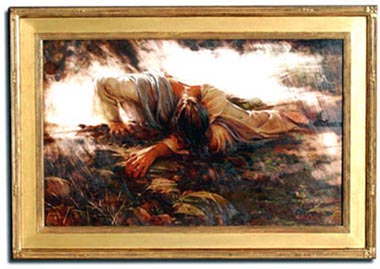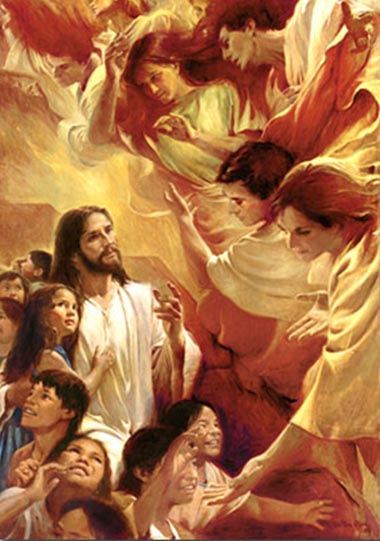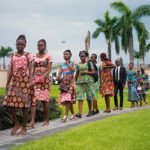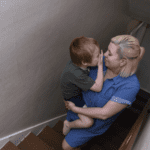Maybe it was the fact that 9/11 had changed how I was viewing everything in my life, but on this day, not too long after those fateful attacks, I found myself staying overnight in the home of a longtime friend. I had wandered downstairs from my guest room and entered the living room that was separated from the rest of the home by a pair of French doors.
As I closed the doors behind me and turned around, my eye was immediately drawn to a painting over the fireplace, an image of a person in agony. His head lay low on his arm and the tension in his fingers told me that he was experiencing pain such as had never been borne by any other person. It was Christ in Gethsemane.

I had seen many images depicting the Savior in Gethsemane, but nothing like this. I wanted to turn away but found myself being drawn in. It was then that I realized that I wasn’t just seeing, I was feeling. Somehow the artist had captured a feeling and it was being conveyed to me in a powerful way.
The next morning I excitedly discussed with my friend the painting in his living room and wanted to know more about this artist who could represent such feeling in his work. The artist was Walter Rane and my friend had just returned from visiting him at his home in Oregon.
That was the beginning of what has been a remarkable journey with an artist who I now consider my friend.
Within a month of that first encounter with the work of Walter Rane, I found myself seated next to him in the back of single engine plane that was now flying over the jungles of Northern Guatemala and Southern Mexico.
We were on a quest together to place ourselves in physical surroundings similar to what might have been those of the people whose record we know as the Book of Mormon. Walter’s assignment was to paint seventeen original images and I was to write words and lyrics for a musical stage production based on the life of Mormon and Moroni.
There are many memories from our days together in Central America, but one that stands out occurred our second day after arriving. One of the images that Walter wanted to paint was of Christ and the children at the time the angels encircled them (3 Nephi 17:24). He had explained to me that it would be impossible to depict a child’s response to such an experience, especially since he liked to work from photos of actual people. How could he ever capture a child exhibiting the proper emotions?
We had hiked on this particular day along a mountainous trail into a village where adobe and stone huts overlooked a deep valley below. After spending several hours taking pictures and visiting with villagers, we began our walk back to the road where our driver was scheduled to pick us up.
As we came to a level spot near the edge of cliff we found a young boy about age eight, ripping pages out of an old book and making paper airplanes from them for his five-year old sister. With planes in hand they would walk dangerously close to the cliff edge where they gleefully tossed their planes over the side.
Being a father of six children, I pride myself as an expert paper airplane maker. I reached into my backpack and pulled out a yellow notepad and sat down to make these children one of my winning designs.
I soon handed the children two of the finest paper airplanes my fatherly hands had ever made and with eyes as big as saucers they ran to the cliff edge and flung them over. They circled and floated farther than they could have ever imagined and began screaming with joy and pointing as the planes finally came to rest in the tree tops hundreds of feet below.
The gleeful screams of the two youngsters were signals to every child within earshot that something special was occurring. Soon I was surrounded by at least a dozen young villagers circling me and reaching their hands in the air for the next airplane to emerge from my hands. I could hardly keep up the demand and the more planes I made the more delightful faces with up stretched arms surrounded me.
A half hour passed like a minute and I had come to the last sheet of paper in my pad. As I bid my new little friends goodbye I realized that Walter had been absent from this whole scene. He had perched himself on a rock just outside of view of the children and had been taking pictures the whole time. As we resumed our walk to the road below he whispered, “Well, I guess we’ll have that painting of Christ and the children after all.”

Editor’s Note: In September 2004 the Museum of Church History and Art opened an exhibit entitled “Scenes From the Land of Promise. Book of Mormon Paintings By Walter Rane.” This exhibit presented the seventeen new paintings by Walter Rane. You can view them, together with other Walter Rane images including the long anticipated image of the empty tomb titled “He is Not Here,” which was featured previously on Meridian Magazine by going to www.walterrane.com.


















